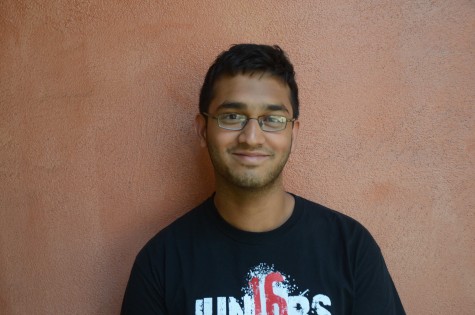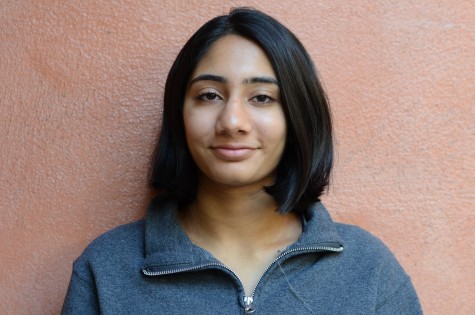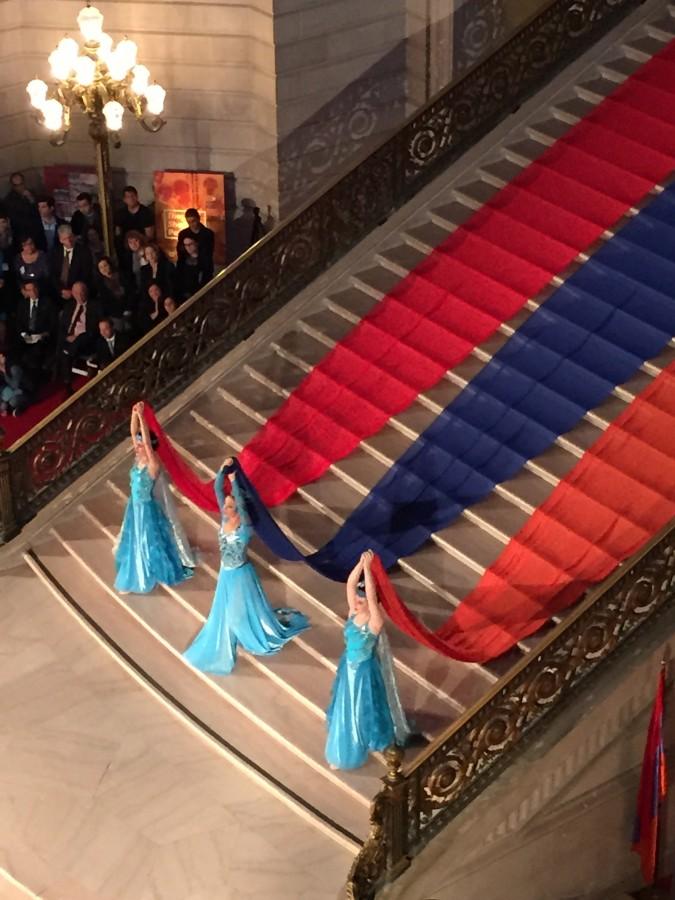American population commemorates 100th anniversary of genocide
For the past ten years, you’ve lived a relatively isolated life in Musa Dagh, an Armenian zone in present-day Southern Turkey consisting of six main villages. Recently however, that peace has been threatened.
There’s been worrisome news of an Ottoman attack where entire villages have been ransacked or wiped out and the survivors have been exiled. You know that your current situation is hopeless; if the Ottomans attacked, you would be both outgunned and outmanned.
Yet, you know there is only one possible option: organize a defense around the nearby Mountain of Moses and hope for eventual aid.
During World War I, beginning in April 24, 1915, the Ottoman Empire attempted to remove Christianity from its territories through displacing and murdering several ethnic populations, including the Armenians, who had been living there for centuries.
For 53 days from July 21 to September 12 of that same year, the Armenians of Musa Dagh faced various assaults from the Ottoman Empire.
Eventually, they were saved by French warships and evacuated, but not all villages had the same opportunities or were as lucky. Only three other zones resisted the Ottoman forces, and in two of those, the Armenian populations were decimated.
On April 24, Armenian Genocide Remembrance Day, thousands of Armenians around the world commemorated the 100th anniversary of the Armenian genocide, recognizing the massacre of 1.5 million people, the massive loss of life and the shattering impact on Armenian culture.
Senior Mariam Sulakian, whose grandfather was a resident of Musa Dagh during the genocide, is currently an advocate for genocide awareness. She most recently participated in a protest in Los Angeles where 130,000 people marched for recognition.
Mariam was first inspired to participate in genocide awareness and advocacy by the story she heard from her grandfather about the Armenians’ successful resistance.
Junior Natalie Simonian, who lost two great-great-grandparents in the genocide, wears a forget-me-not flower necklace to spread awareness of the genocide. She explains the significance of the flower, which is the symbol of the genocide’s centennial.
“The black bit represents the past of Armenian suffering and our history. The 12 panels symbolize the 12 states that Turkey then took over after the genocide,” she said. “Then the five light purple petals represent [present-day] Armenia and the five continents on which the diaspora spread and the dark purple ones [represent] the Armenian future in which we’ll hopefully achieve justice for our people.”
Despite recognition from 43 states and 25 countries, the U.S. federal government has not called the event a genocide, in part due to diplomatic relations with Turkey.

Vineet Kosaraju (12) is the STEM Editor for both Harker Aquila and Winged Post. He is a senior and has been part of the journalism program for the past...

Kavya Ramakrishnan (12) is the managing editor of the Winged Post. This is her fourth year on staff, having previously held the positions of reporter and...


















![“[Building nerf blasters] became this outlet of creativity for me that hasn't been matched by anything else. The process [of] making a build complete to your desire is such a painstakingly difficult process, but I've had to learn from [the skills needed from] soldering to proper painting. There's so many different options for everything, if you think about it, it exists. The best part is [that] if it doesn't exist, you can build it yourself," Ishaan Parate said.](https://harkeraquila.com/wp-content/uploads/2022/08/DSC_8149-900x604.jpg)




![“When I came into high school, I was ready to be a follower. But DECA was a game changer for me. It helped me overcome my fear of public speaking, and it's played such a major role in who I've become today. To be able to successfully lead a chapter of 150 students, an officer team and be one of the upperclassmen I once really admired is something I'm [really] proud of,” Anvitha Tummala ('21) said.](https://harkeraquila.com/wp-content/uploads/2021/07/Screen-Shot-2021-07-25-at-9.50.05-AM-900x594.png)







![“I think getting up in the morning and having a sense of purpose [is exciting]. I think without a certain amount of drive, life is kind of obsolete and mundane, and I think having that every single day is what makes each day unique and kind of makes life exciting,” Neymika Jain (12) said.](https://harkeraquila.com/wp-content/uploads/2017/06/Screen-Shot-2017-06-03-at-4.54.16-PM.png)








![“My slogan is ‘slow feet, don’t eat, and I’m hungry.’ You need to run fast to get where you are–you aren't going to get those championships if you aren't fast,” Angel Cervantes (12) said. “I want to do well in school on my tests and in track and win championships for my team. I live by that, [and] I can do that anywhere: in the classroom or on the field.”](https://harkeraquila.com/wp-content/uploads/2018/06/DSC5146-900x601.jpg)
![“[Volleyball has] taught me how to fall correctly, and another thing it taught is that you don’t have to be the best at something to be good at it. If you just hit the ball in a smart way, then it still scores points and you’re good at it. You could be a background player and still make a much bigger impact on the team than you would think,” Anya Gert (’20) said.](https://harkeraquila.com/wp-content/uploads/2020/06/AnnaGert_JinTuan_HoHPhotoEdited-600x900.jpeg)

![“I'm not nearly there yet, but [my confidence has] definitely been getting better since I was pretty shy and timid coming into Harker my freshman year. I know that there's a lot of people that are really confident in what they do, and I really admire them. Everyone's so driven and that has really pushed me to kind of try to find my own place in high school and be more confident,” Alyssa Huang (’20) said.](https://harkeraquila.com/wp-content/uploads/2020/06/AlyssaHuang_EmilyChen_HoHPhoto-900x749.jpeg)



